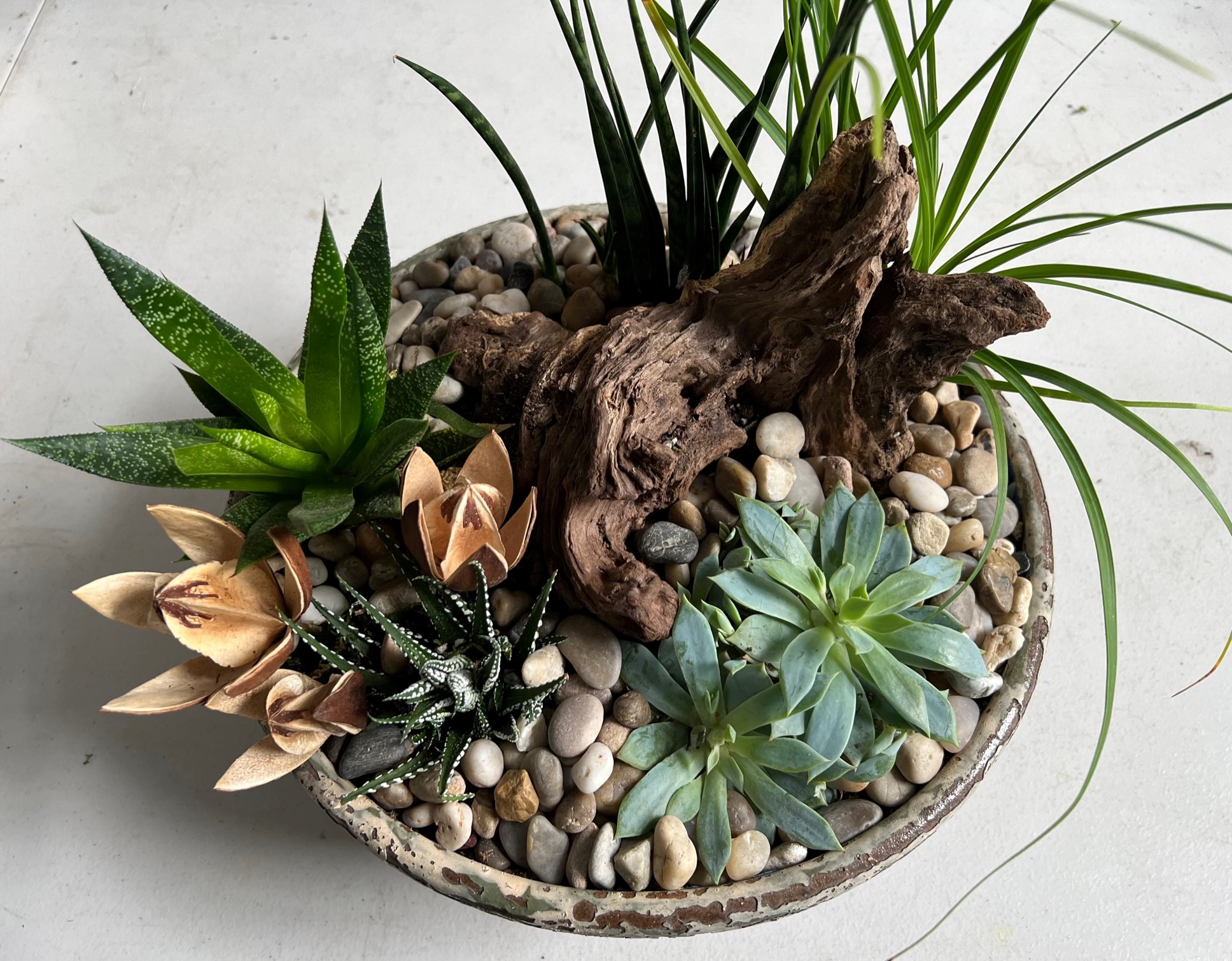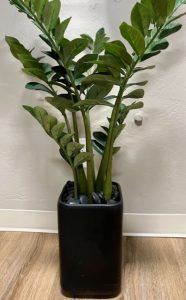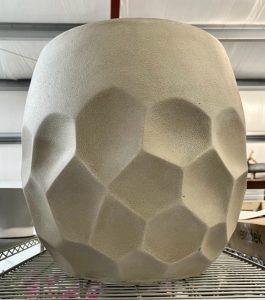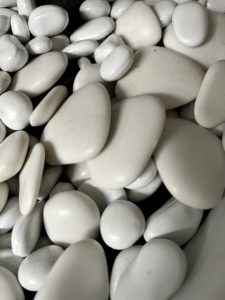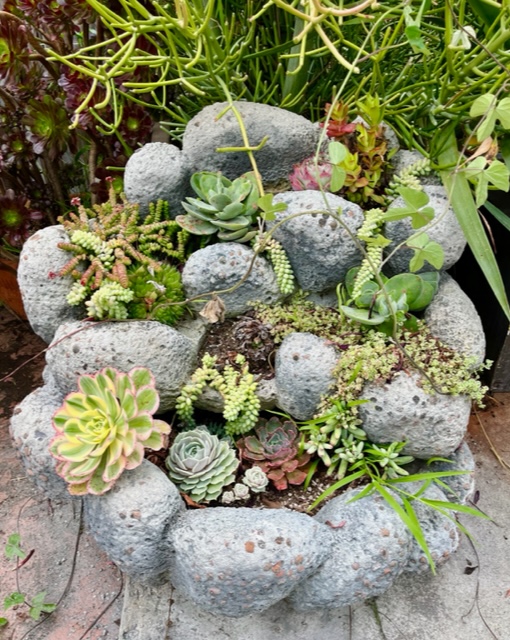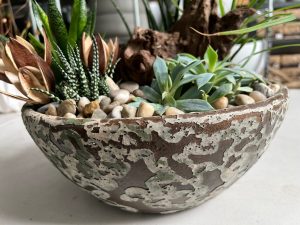
Good Earth Plants frequently uses stone as a biophilic design element such as this stone bowl filled with succulents and… stones
Everybody Must Get Stones
Last post, we took a look at wood as a biophilic element. In case you missed it, it’s not too late to check out some interesting pictures & facts on wood as a biophilic element.
This week, our focus has turned to stone.
As humans, we are innately connected to the natural world around us. Our affinity for nature is even reflected in the built environment, as we seek to bring elements of the natural world into our homes and workplaces. This sentiment is at the heart of biophilic design – a design trend that emphasizes the importance of incorporating elements of nature into the man-made environment, with the goal of enhancing our wellbeing. One important non-living element is stone.
Building with Stone
The oldest known structure is, in fact, made of stone and it’s not Stonehenge. Dating back 11,500 years, Turkey’s Göbekli Tepe is an incredible archeological site with carved limestone monument megaliths. While Stonehenge may be the most well known to us in the Western World, it only comes in at #9 on the list of the world’s oldest stone structures. It’s comparatively young, built about 5,000 years ago.
Not only was stone an early building material, evidence was discovered in 2013 that neanderthals used it inside caves, carving, burning and moving it around. This means that 47,600 years ago, our neanderthal ancestors were adding it to their built (cave) environment.
Why do we like using stone so much?
Well, it’s a natural material with an inherent texture, weight, and durability that is hard to replicate with synthetic materials. The plastic faux stones you can buy to disguise speakers and keys aren’t going to fool anyone. It’s also incredibly durable, making it a top choice for many projects. You may not know that stone:
- Regulates temperature
- Regulates humidity
- Adds depth, character, and warmth or austerity, as the case may be
- Adds interest with texture, patterns and shapes
Stones for Well Being
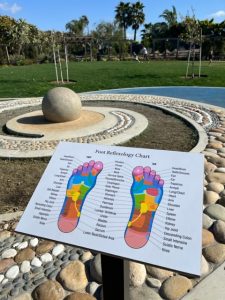
The Stone Reflexology Garden at Encinitas’ Olympus Park
As an organic element, stone creates a sense of connection for us to the outdoor world. Studies show that organic, biophilic elements:
- Impact wellbeing & productivity
- Can reduce stress, enhance cognitive functioning and improve mood
Hot stone massage, anyone?
Using Stone as an Interior Biophilic Design Element
- Office plants thrive in the right conditions – this plant lives in the Good Earth Plant office
Indoors, you don’t have to interior design like the Flintstones to reap the benefits. You may already have stone in your house and apart from color, maybe you didn’t consider why you like that countertop or tile so much. If you don’t have any, adding just a little can create a tactile and sensory experience in your home, office or commercial space. Here are some examples of easy places to incorporate stone:
- Stone countertops
- Stone tile
- Stone in furniture
- Stone in accent pieces
- Stone art, such as sculptures
Using Stone Outdoors
- Reimagined stone water fountains as stone planters
Stone is often used in landscaping and hardscaping, from border edges to pool structures and even rock gardens. Check out these repurposed stone fountains we keep at the Good Earth Plants warehouse. If you find yourself in Encinitas, Dave’s Rock Garden is a must see.
Stone A-Foot-notes
It’s also interesting to note that certain types of stone are associated with different symbolism and cultural meanings. For example, marble is associated with luxury and refinement, granite is associated with strength and durability, and limestone is associated with stability and grounding. Architects and designers incorporating these symbolic elements into a space can add depth and meaning to a design.
One fascinating aspect of stone as a non-living biophilic element is its natural evolution over time. As stone is exposed to the elements, it changes in color and texture, providing a visual record of the passage of time. This natural weathering process can add a sense of history and permanency to a building, strengthening its connection to the natural world and our place within it.

